Stocks finally got spooked as the bulls pulled in their horns and the bears showed their claws. The market opened strong and moved higher in early trading, but quickly reversed and moved sharply lower. The Fed got the blame as investors contemplated an end to quantitative easing. Frankly speaking, an end to QE would be positive for stocks because it would suggest that the economy is strong enough to stand on its own. Short-term, however, stocks were overbought on almost all metrics and ripe for some sort of pullback or correction. The S&P 500 is up over 18% from its mid November low and up over 7% from its mid April low. These are big numbers and a corrective period is certainly warranted. Selling pressure is spreading throughout Asia and Europe. Note that the Nikkei 225 ($NIKK) fell over 6% on Thursday.
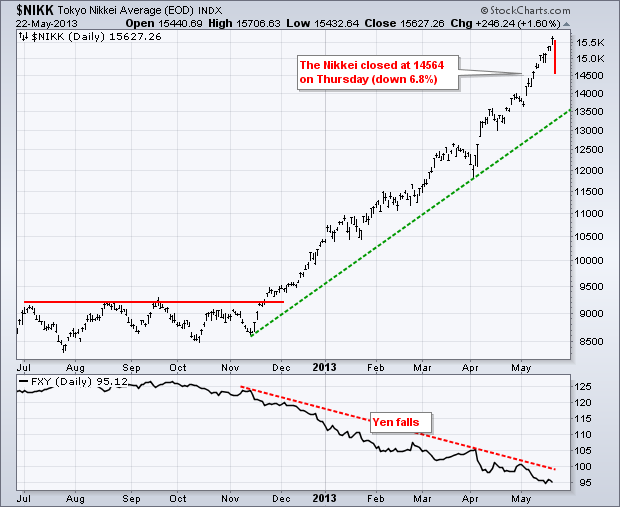


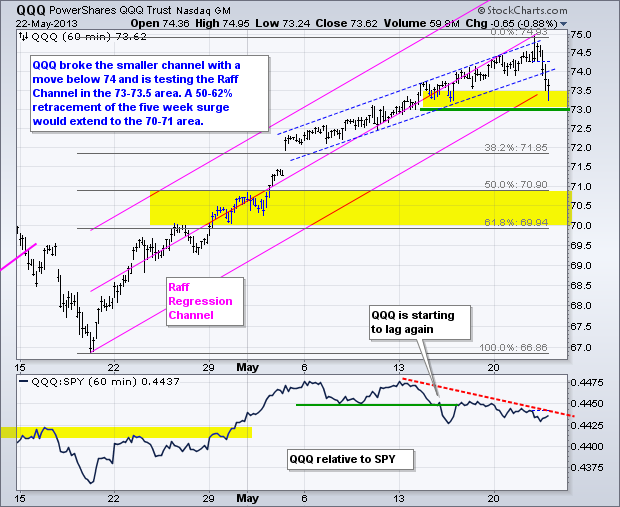
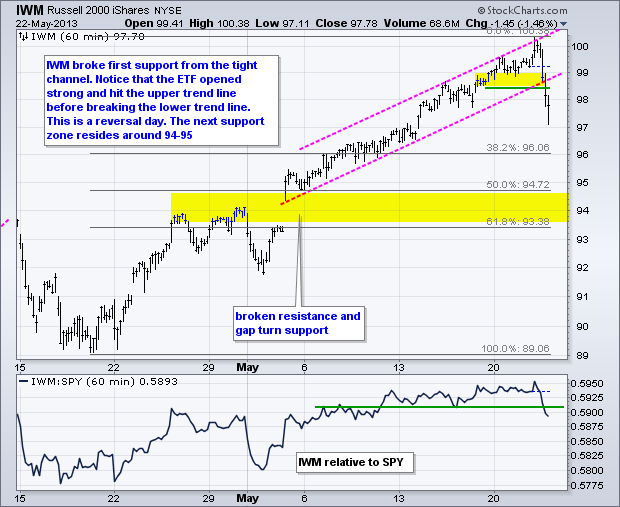
**************************************************************************
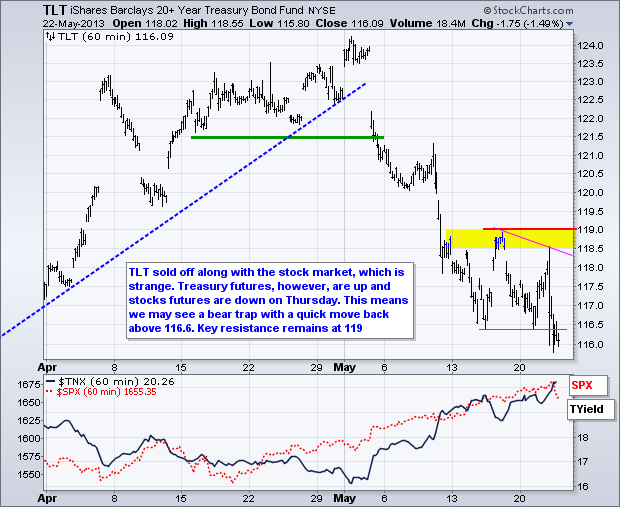
**************************************************************************
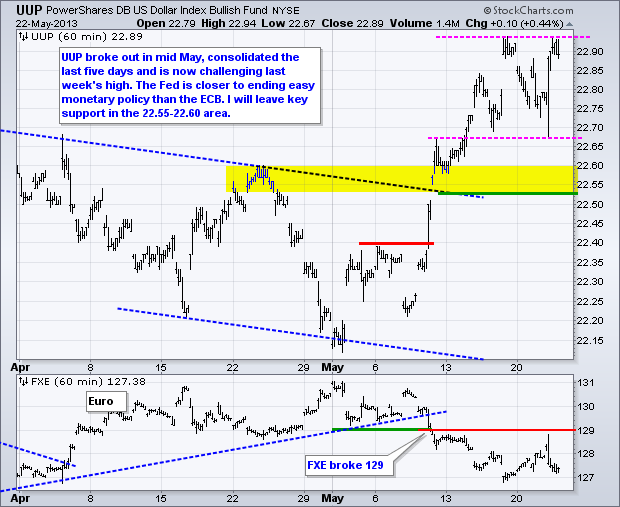
**************************************************************************
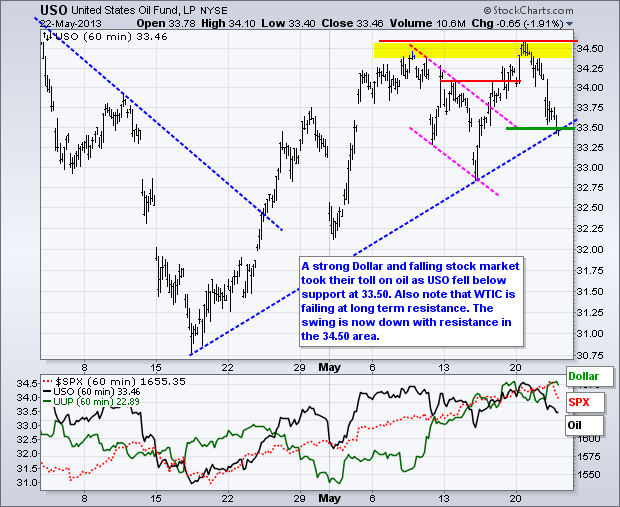
**************************************************************************

**************************************************************************
Key Reports and Events (all times Eastern):
Thu - May 23 - 08:30 - Jobless Claims
Thu - May 23 - 09:00 - FHFA Housing Price Index
Thu - May 23 - 10:00 - New Home Sales
Thu - May 23 - 10:30 - Natural Gas Inventories
Fri - May 24 - 08:30 - Durable Goods Orders
Charts of Interest: Tuesday and Thursday
This commentary and charts-of-interest are designed to stimulate thinking. This analysis is
not a recommendation to buy, sell, hold or sell short any security (stock ETF or otherwise).
We all need to think for ourselves when it comes to trading our own accounts. First, it is
the only way to really learn. Second, we are the only ones responsible for our decisions.
Think of these charts as food for further analysis. Before making a trade, it is important
to have a plan. Plan the trade and trade the plan. Among other things, this includes setting
a trigger level, a target area and a stop-loss level. It is also important to plan for three
possible price movements: advance, decline or sideways. Have a plan for all three scenarios
BEFORE making the trade. Consider possible holding times. And finally, look at overall market
conditions and sector/industry performance.

About the author:
Arthur Hill, CMT, is the Chief Technical Strategist at TrendInvestorPro.com. Focusing predominantly on US equities and ETFs, his systematic approach of identifying trend, finding signals within the trend, and setting key price levels has made him an esteemed market technician. Arthur has written articles for numerous financial publications including Barrons and Stocks & Commodities Magazine. In addition to his Chartered Market Technician (CMT) designation, he holds an MBA from the Cass Business School at City University in London.
Learn More